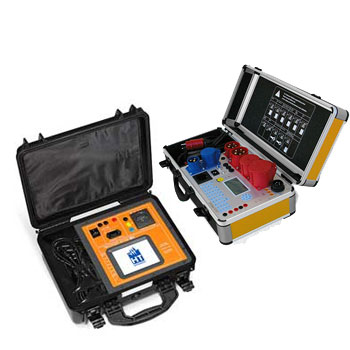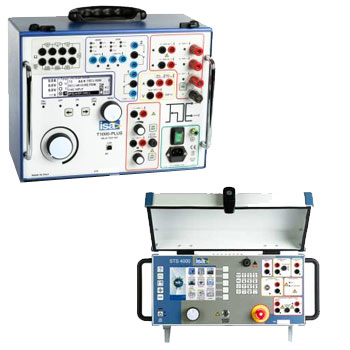Working pressure 400 - 630bar (5800 - 9000psi) (DN2) and 315 - 450bar (4560psi - 6525psi) (DN4)
 Catalog Excerpt Catalog Excerpt
|
 Datasheet Datasheet
|
 Compatibility Compatibility
|
 Ordering Code Ordering Code
|

Minimess® Hoses – microbore lines for pressure measurement, service & condition monitoring
Minimess® hoses connect test points to gauges, pressure sensors or test instruments—in tight spaces, with minimal fluid volume and very low spillage. The microbore lines (DN2/DN4) allow quick, safe coupling to Minimess® ports (e.g., 1215/1604/1615/1620) and can be assembled with fittings in zinc–nickel steel or 316/316L stainless steel.
Options (series-dependent): working pressure up to 630 bar, typical temperature −30…+100 °C (higher with PTFE liner), media hydraulic oils, water–glycol, fuels, air/inert gases; jackets PA/PUR/PTFE; protection braid/spring/kink guard; ends 7/16″-20 UNF, M16×2, M16×1.5, G 1/4 etc.; color coding and optional factory/DAkkS calibration of the measuring chain.
ICS Schneider Messtechnik assembles length, end fittings and materials to match your system—from single pieces to complete service kits.
FAQ on Minimess® Hoses
Answers on DN2/DN4 selection, pressure/temperature limits, material choice, connections, installation, tightness, safety and best practices.
DN2 or DN4—which bore size fits my job?
| Bore size | Typical working pressure | Advantages | Use case |
|---|---|---|---|
| DN2 (~2 mm) | up to 630 bar (series-specific) | Very flexible, tiny internal volume, fast pressure response | Mobile hydraulics, cramped spaces, temporary measurements |
| DN4 (~4 mm) | up to 400 bar (series-specific) | Higher flow, more robust | Longer runs, stationary test setups |
Which media are compatible?
Hydraulic oils (mineral/synthetic), water–glycol, fuels, air/inert gases. For aggressive media choose stainless fittings and a PTFE liner.
What hose constructions are available?
| Construction | Temp. range (typ.) | Properties | Recommendation |
|---|---|---|---|
| PA/PUR microbore | −30…+100 °C | Lightweight, flexible, proven | General hydraulics/service |
| PTFE liner with braid | −40…+200 °C | Excellent chemical/temperature resistance | Process/chemicals, high-T |
| Metal braid / guard spring | material-dependent | Mechanical/abrasion protection | Harsh environments, mobile hydraulics |
Which end connections are common?
7/16″-20 UNF (classic Minimess® hose end), M16×2, M16×1.5, G 1/4 (BSPP), NPT; instrument-side adapters for M12×1.5, standard gauge threads or quick couplings.
How do I choose the right length?
Keep it as short as possible for fast response and low damping; add allowance for the minimum bend radius, motion and safe routing.
What bend radii apply?
Never route below the minimum bend radius (datasheet). Avoid kinks; use a guard spring or 90° adapter for tight runs.
What are the pressure and temperature limits?
Depending on series up to 630 bar (DN2) or 400 bar (DN4). Typical temperature −30…+100 °C, higher with PTFE. Burst is usually ≥ 4× working pressure—see datasheet for exact values.
How are the ends sealed?
Via O-ring/face seal (BSPP/G) or cone/sealing cone (UNF/Minimess®). Do not apply sealing tape to sealing faces.
Can I couple and uncouple under pressure?
Yes—when used with Minimess® test points (e.g., 1215/1604/1615/1620) designed for under-pressure coupling with very low spillage.
What affects measurement dynamics?
- Hose length/bore: longer and larger bore → more damping/volume.
- Medium: trapped air increases compressibility → damps and masks peaks.
- Temperature: viscosity shifts change response.
How do I route the hose safely?
Use clamps, protective braid and kink guards; avoid shear/pinch points and hot surfaces; keep distance from moving parts.
Cleanliness—what should I watch out for?
Fit dust caps to the ends, flush before installation (clean medium), avoid particles; in process plants consider a flush record.
Are gas applications possible?
Suitable for compressed air/inert gases; for natural gas/LPG/H₂ use gas-rated hoses/couplings (e.g., DVGW variants) and HNBR/PTFE seals.
What tests/documents can you supply?
Pressure/leak tests, factory/DAkkS calibration of the measuring chain, EN 10204 material certs and installation reports on request.
Service life & replacement intervals?
Driven by pressure cycles, temperature, UV and mechanical stress. Inspect regularly for cracks/kinks/blisters; replace if damaged or aged.
Common issues & quick fixes
- Leak at fitting → check/replace O-ring, clean seat, verify torque.
- Sluggish readings → shorten line/use DN2, remove air.
- Kinks → reroute, add guard spring.
Do you support selection & custom assembly?
Yes—we select DN/length/material, define end combinations, build custom lines and can deliver complete service kits on request.












































































































































































